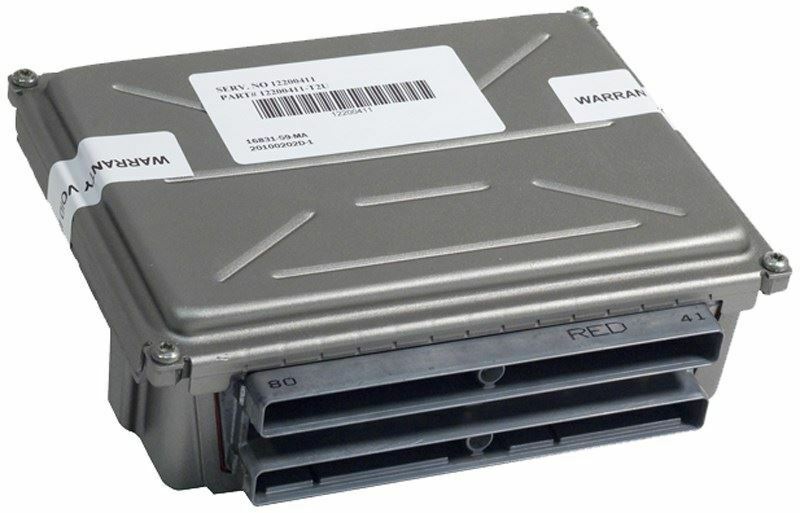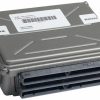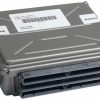Restore Your Truck’s Heartbeat and Drive with Confidence
Is your 2004 Sierra Denali or GM truck feeling sluggish, unpredictable, or just not itself? A failing Powertrain Control Module (PCM) can be the hidden culprit behind a host of frustrating issues, from a persistent check engine light to poor fuel economy and even a no-start condition. It’s the brain of your vehicle, and when it’s not functioning correctly, the entire system suffers. This isn’t just an inconvenience; it’s a matter of reliability and peace of mind. We’re here to provide the definitive solution: a professionally programmed PCM, flashed with the latest GM software specifically for your vehicle’s VIN.
An Old Pro’s Tale: The Ghost in the Machine
I remember a 2004 Silverado that came into my bay years ago with the strangest set of problems. The transmission would shift hard one minute and be perfectly fine the next. The owner had already replaced sensors and solenoids, chasing what he called a ‘ghost’. After hours of diagnostics, we traced it back to a failing PCM. The internal processor was intermittently failing, sending corrupt data. Swapping in a properly programmed module was like an exorcism—the truck immediately ran like it just rolled off the factory floor. That’s the power of a healthy ECU; it brings everything back into harmony.
Symptoms of a Failing PCM & The Benefits of Replacement
Don’t let a faulty computer keep you off the road. If you’re noticing any of these warning signs, it’s time to consider a replacement. Getting this fixed means regaining control and dependability.
- ✔ Check Engine Light On: Often with codes like P0601, P0602, P0606, or other communication errors.
- ✔ Engine Performance Problems: Stalling, misfiring, rough idling, or a noticeable loss of power.
- ✔ Poor Fuel Economy: The engine isn’t receiving the correct parameters for fuel delivery, causing it to run rich or lean.
- ✔ Transmission Shifting Issues: Hard or erratic shifting can be directly caused by incorrect signals from the PCM.
- ✔ Vehicle Won’t Start: The PCM controls the fuel and spark systems; if it fails completely, your engine won’t start.
- ✔ Failed Emissions Test: A malfunctioning module can’t properly manage emissions systems.
Guided Installation for Your 2004 Sierra Denali PCM
Replacing the PCM is a surprisingly straightforward job that most DIYers can handle with basic tools. This module is plug-and-play once you perform a simple security relearn procedure. Follow these steps for a successful installation and get back to a smooth-running truck.
- Safety First: Always disconnect the negative terminal of your vehicle’s battery before starting any electrical work.
- Locate the Module: On most 2004 GM trucks like the Sierra and Silverado, the PCM is located on the driver’s side, in the engine bay, under the battery tray. You will need to remove the battery to access it.
- Disconnect and Remove: Carefully unplug the electrical connectors. They have locking tabs that need to be released. Once disconnected, unbolt the old PCM from its mounting bracket.
- Install the New PCM: Mount your new, pre-programmed PCM in the same location. Securely reconnect the electrical harnesses, ensuring they click into place.
- Reconnect Battery & Perform Security Relearn: Reinstall the battery and connect the negative terminal. You will then need to perform a security relearn procedure (often called a Passlock relearn). This typically involves turning the key to the ‘ON’ position for 10-15 minutes, then off, and repeating two more times. This syncs the new PCM with your vehicle’s anti-theft system.
Pro Tip: Check Your Grounds
Before installing your new PCM, take a moment to inspect and clean the main engine and chassis ground connections. A poor ground is a common cause of PCM failure and can create a host of electrical gremlins. A few minutes with a wire brush can save you a lot of headaches down the road.
Tailored Fit for Your Ride
This PCM is a direct replacement for service number 12586242 and is compatible with a wide range of 2004 GM vehicles. Please verify your service number or match your vehicle from the list below. This module also interchanges with the following service numbers: 19299226, 89017738, YFKD, YFKF, YFKH, YFKJ, YFKX, YFXL, YFXM, YFXN, YFXP, YHTN.
- 2004 Cadillac Escalade, ESV, EXT
- 2004 Chevrolet Avalanche 1500
- 2004 Chevrolet Silverado 1500, 2500, 3500 (Gasoline Engines)
- 2004 Chevrolet SSR
- 2004 Chevrolet Suburban 1500, 2500
- 2004 Chevrolet Tahoe
- 2004 Chevrolet Trailblazer EXT (5.3L)
- 2004 GMC Envoy XL, XUV (5.3L)
- 2004 GMC Sierra 1500, 2500, 3500 (Gasoline Engines)
- 2004 GMC Sierra Denali
- 2004 GMC Yukon, Yukon XL 1500, Yukon XL 2500
- 2004 Hummer H2
- 2004 Isuzu Ascender (5.3L)
- 2004 Buick Rainier (5.3L)
Frequently Asked Questions
Do I need to do any programming myself?
No. We handle all the programming for you. This PCM will arrive flashed with the latest GM updates and coded to the specific VIN you provide, making it ready for installation. You will only need to perform a standard security relearn procedure after installation.
How do I provide my VIN?
After you complete your purchase, you will need to send us your 17-digit Vehicle Identification Number (VIN). You can typically find this on your driver’s side dashboard (visible through the windshield), on the driver’s side door jamb sticker, or on your vehicle’s registration and insurance documents.
Will this fix my check engine light?
If the check engine light is caused by an internal failure of the PCM (such as with code P0601), then this replacement module will solve the problem. However, if the light is on due to a faulty sensor or other component, that issue will still need to be addressed separately.
Where is the PCM located on my 2004 Sierra Denali?
On the 2004 Sierra Denali, as well as most similar GM trucks of this era, the PCM is found in the engine compartment on the driver’s side, mounted underneath the battery and battery tray.
What is the security relearn procedure?
It’s a simple process that syncs the new PCM to your vehicle’s anti-theft system. It generally involves cycling the ignition key on and off in 10-minute intervals three times. This allows the components to communicate and authorize the new module. Your vehicle will not start until this is completed.


